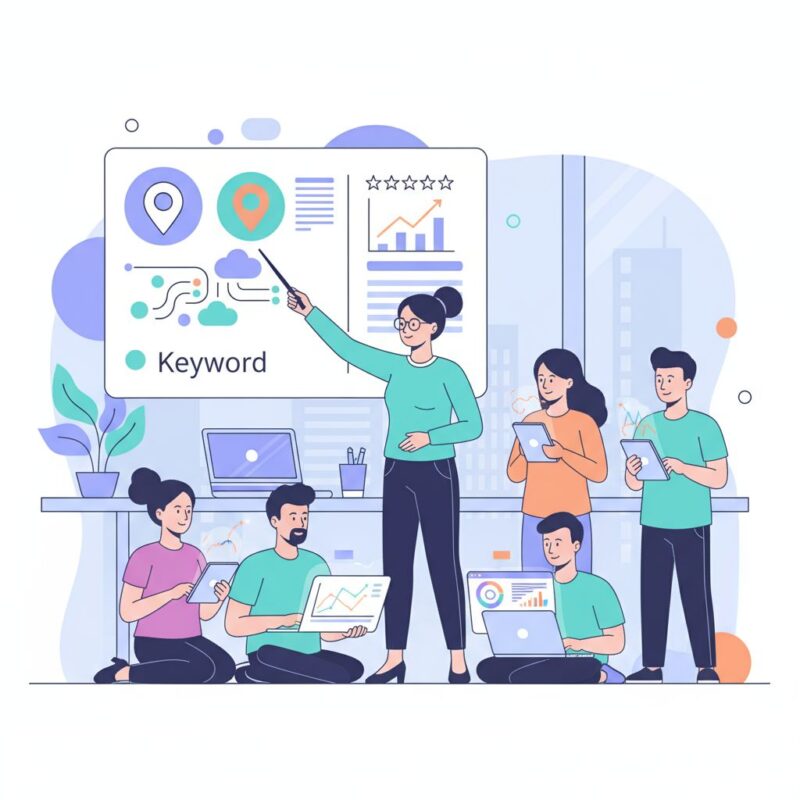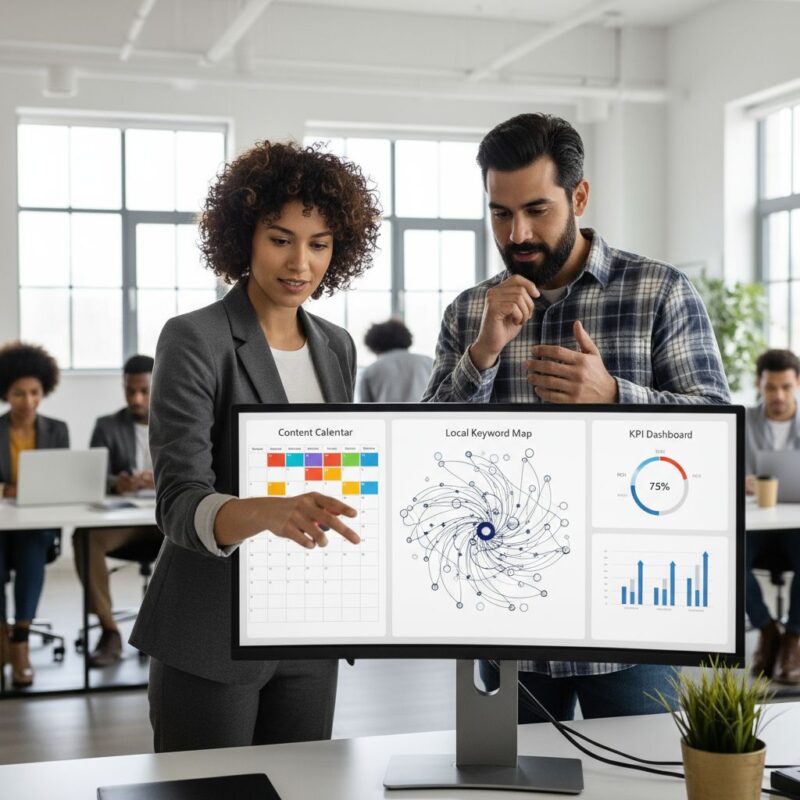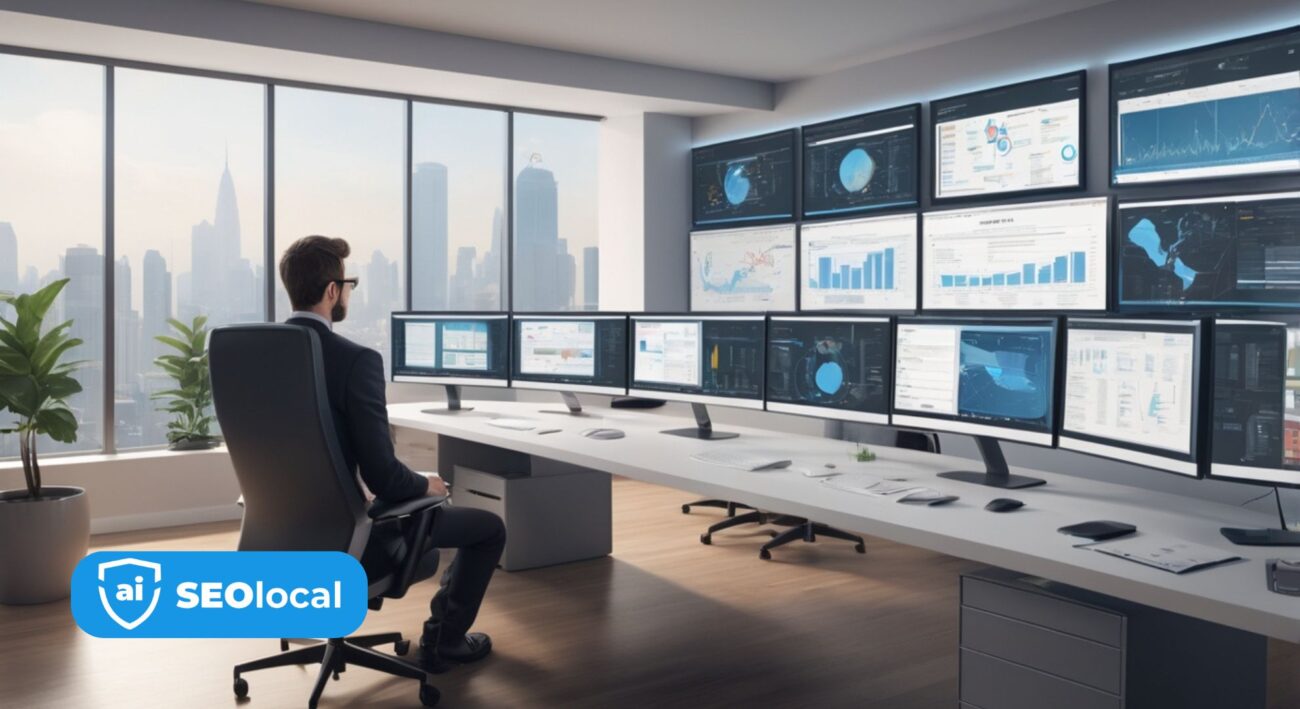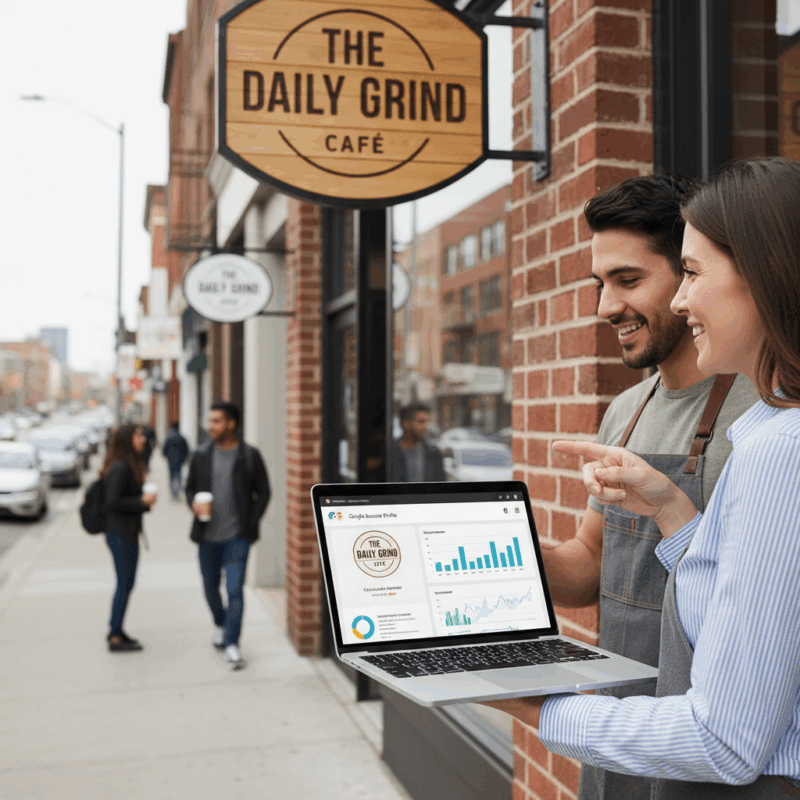- Advanced Local SEO Strategies
- Fundamentals of Local SEO
- Google Business Profile (GBP) Optimization
- Local Keywords and Content Strategy
- Local Link Building
- Local Paid Advertising
- Local Search Ranking Factors
- Local SEO Best Practices
- Local SEO Tools and Analytics
- Local Social Media Marketing
- Online Reviews and Reputation Management
- Technical SEO for Local Businesses
Types of Local SEO: A Guide for Businesses
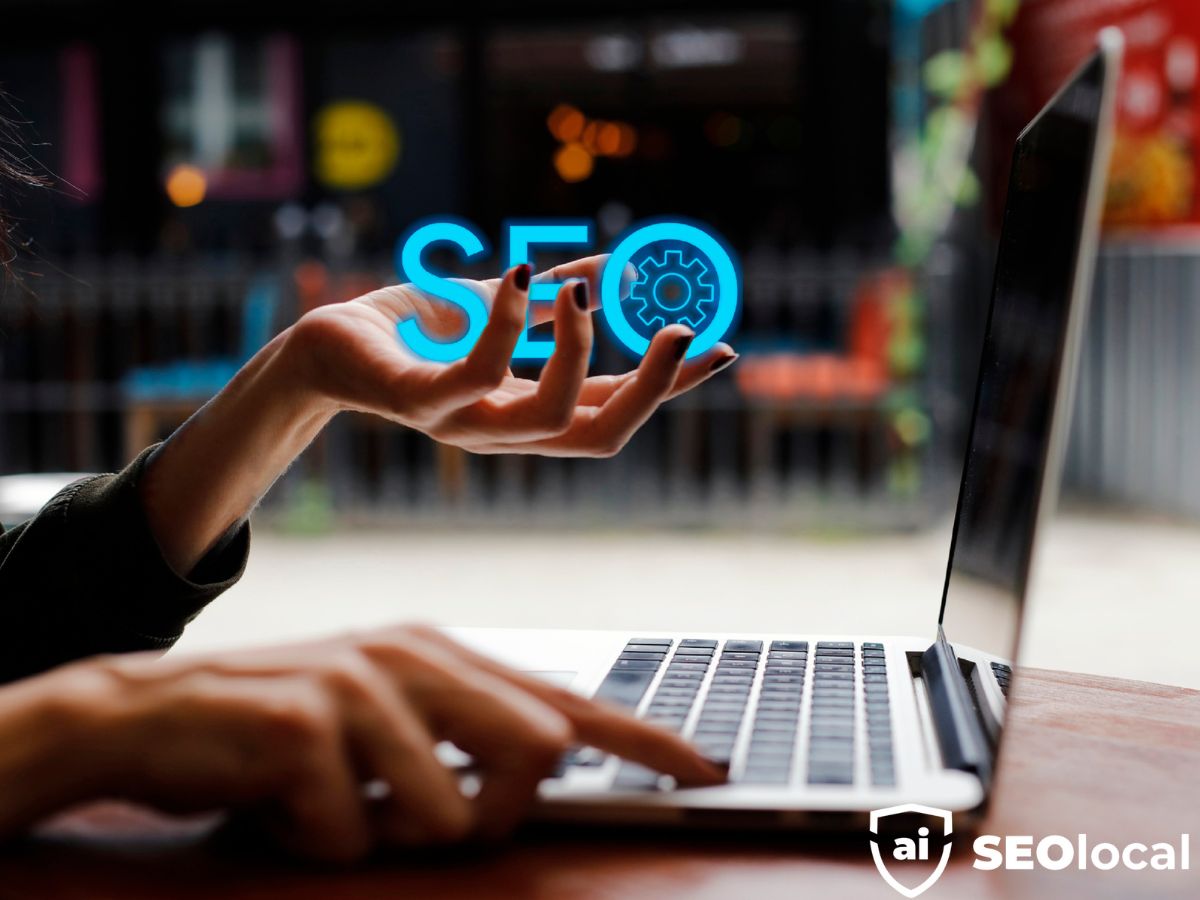
Did you know 46% of all searches on Google have local intent? That means nearly half of users look for nearby businesses or services. If your company isn’t optimizing for this, you’re missing out on potential customers.
Google’s algorithm considers over 200 ranking factors to decide which businesses appear in local searches. The top results often include a map-based “3-pack” for queries like “near me.” These listings get more clicks than standard organic results.
SEO Local experts recommend blending map pack and organic strategies. Whitespark’s research shows businesses ranking in both see 3x more traffic. This guide breaks down seven proven methods to improve visibility.
Key Takeaways
- 46% of searches target nearby products or services.
- Google’s local pack (3-map listings) dominates “near me” queries.
- 200+ ranking factors influence search engine results.
- Combining map and organic tactics maximizes visibility.
- Service-based businesses benefit most from local intent searches.
Introduction to Local SEO
Mobile searches with location intent drive 30% of all queries—are you capturing them? For brick-and-mortar stores or service-area businesses, this strategy helps you appear when customers search nearby. Google’s data shows complete profiles increase visit likelihood by 70%.
Success requires a dual approach. Map pack listings (the top 3 local results) and organic blue links both drive traffic. A pizza restaurant with 994 reviews and a 4.7/5 rating dominates both—earning more walk-ins and orders.
Local and organic tactics differ:
| Factor | Local SEO | Organic SEO |
|---|---|---|
| Primary Focus | Google Business Profile | Website content |
| Rankings Influencer | Proximity + reviews | Backlinks + keywords |
| Conversion Path | Clicks-to-call/directions | Form submissions |
“Local intent” searches—like “plumber near me”—signal urgent buyer needs. 78% of mobile users visit within a day. Optimizing for these queries puts you ahead.
Beyond technical fixes, customer delight fuels passive growth. Happy clients leave reviews, share your location, and boost rankings. It’s a flywheel effect.
1. Google Business Profile Optimization
Your Google Business Profile (GBP) acts as a digital storefront—36% of marketers say it’s the top map pack ranking factor. Complete profiles drive 50% more purchase consideration, making optimization non-negotiable.
Key Elements of Strong Profile
Every detail matters. Google cross-references your profile with user searches to determine rankings. Essential fields include:
- Business name: Use your legal name—no keyword stuffing. Violations risk removal.
- Categories: Pick primary and secondary options from 4,000+ niches. A bakery might select “Gluten-Free Bakery” and “Custom Cakes.”
- Website URL: Link to a dedicated service area or location page for better relevance.
Proximity and Listing Completeness
Google weighs proximity heavily for “near me” queries. If your address falls within the searched radius, you’re more likely to rank. But incomplete profiles lose to competitors—even if they’re farther away.
Boost visibility by:
- Adding holiday hours and special service markers (e.g., “curbside pickup”).
- Uploading photos of your location, team, and products monthly.
- Ensuring NAP (Name, Address, Phone) matches your website exactly.
Complete listings send stronger dwell-time signals. Customers spend 50% longer on profiles with photos and updated hours.

2. Review Management for Local SEO
Customer reviews influence 67% of purchasing decisions—are yours working for or against you? Google’s algorithm weighs recent, text-heavy feedback more than ratings alone. Businesses with 20+ reviews rank 37% higher in search results.
Why Quantity and Quality Matter
Review velocity (frequency) signals activity. Aim for 3–5 new reviews monthly. Recency matters too—feedback from last week holds more weight than a 6-month-old comment.
Encourage detailed stories. Phrases like “best plumber in Austin” or “fast oil change” boost visibility. Nova Home Improvement earned a featured snippet by embedding such terms in customer reviews.
Handling Negative Feedback
Respond within 48 hours—publicly and professionally. Offer solutions offline to show accountability. Google rewards businesses that address complaints constructively.
Avoid fake reviews. FTC fines violators up to $43,792 per offense. Instead, ask happy clients via email or SMS with direct links to your profiles.
- Diversify platforms: List on Yelp, WebMD, and niche directories like Angi for contractors.
- Monitor consistency: Ensure NAP matches across all platforms to avoid confusion.
- Leverage tools: Use Podium or Birdeye to automate requests and track responses.
3. Website SEO for Local Businesses
Your website is the backbone of your digital presence—34% of SEOs rank on-page factors as the top organic ranking element. Moz’s Domain Authority metric underscores this: technically sound sites dominate local searches. Here’s how to optimize.
On-Page Optimization Techniques
Start with schema markup. Adding structured data to your service pages helps Google display rich snippets, like star ratings or pricing. A Tampa roofing company saw a 30% CTR boost after implementing schema for “emergency roof repair.”
City/service pages need clear structures. For example, an Orlando roofing business should have:
- A dedicated page per service (e.g., “Metal Roof Installation in Orlando”).
- Location-specific keywords in H2s and meta descriptions.
- Photos of local projects with geo-tagged alt text.
HTTPS and mobile-first indexing are non-negotiable. Google penalizes non-secure sites, and 60% of local searches happen on mobile. Test your site’s speed with PageSpeed Insights—aim for under 3 seconds.
NAP Consistency Across Your Site
Inaccurate Name, Address, or Phone (NAP) details hurt rankings. A case study showed a 40% improvement after fixing inconsistencies. Cross-check these elements:
- Footer contact info matches your Google Business Profile.
- Service pages use localized NAP (e.g., “Miami branch: 123-456-7890”).
- Avoid duplicate content in multi-location setups—rewrite boilerplate text.
Internal linking strengthens relevance. Link service pages to location pages with anchor text like “Best HVAC services in Dallas.” This helps search engines understand your geographic focus.
4. Local Citations and Directory Listings
Inconsistent business listings can drop your rankings faster than poor reviews—here’s how to fix them. Citations (mentions of your Name, Address, and Phone number) verify legitimacy for search engines. Data Axle and Localeze power 62% of aggregator listings, making them non-negotiable for visibility.
Top Directories to Target
Focus on high-authority platforms first. A tiered approach ensures maximum impact:
- Data Aggregators: Infogroup, Data Axle, and Localeze feed details to smaller sites.
- Major Platforms: Apple Maps, Yelp, and BBB appear in 89% of local pack results.
- Niche Sites: Angi (home services), ZocDoc (healthcare), or Resy (restaurants).
Maintaining Citation Accuracy
Mismatched phone numbers or addresses confuse algorithms. Use BrightLocal’s checker to audit 50+ directories at once. Tools like Yext sync updates across platforms, but manual verification is crucial for niche listings.
A Denver plumber gained 23% more visibility after fixing 17 inconsistent listings. Their corrected NAP details included:
- Uniform area code (303) across all platforms.
- Standardized “St.” versus “Street” abbreviations.
- Removed duplicate profiles on lesser-known directories.
5. Building Local Backlinks
Links from trusted local sources boost your search rankings more than generic directories. A study shows 31% of SEO experts consider backlinks the top organic ranking factor. Local news sites, for example, provide three times more authority than standard listings.
Finding High-Quality Local Links
Not all links are equal. Focus on domains with high Domain Authority (DA) and Page Authority (PA). These metrics measure a site’s strength—higher numbers mean more ranking power.
Use tools like Ahrefs’ Link Intersect to analyze competitors. This reveals where they get links so you can target the same sources. A San Diego bakery earned 18 local backlinks by sharing recipes with food blogs and event sites.
| Source Type | Authority Boost | Example |
|---|---|---|
| Local News Sites | High | Featured in “Best Coffee Shops” roundup |
| Chamber of Commerce | Medium | Member directory listing |
| Sponsorships | Medium | School fundraiser backlink |
Diversifying Your Link Profile
A mix of link types signals natural growth to search engines. Avoid paid schemes—Google penalizes private blog networks (PBNs) and shady tactics.
Instead, try these ethical strategies:
- Sponsor local events (5K runs, school programs).
- Guest post on regional blogs with geo-modified keywords.
- Get featured in “Best of [City]” lists through PR outreach.
Anchor text matters. Phrases like “top HVAC service in Phoenix” work better than generic “click here” links. Balance branded and keyword-rich anchors for the best results.
6. Content Clusters for Local SEO
Strategic content planning separates top-ranking businesses from competitors. Hub-spoke models increase rankings by 37%, like an Orlando roofing company dominating “metal roof installation” queries. Organize your pages to match search intent—whether customers seek services or neighborhood insights.
Creating Service and Location Pages
Dedicated pages for each service area signal relevance. A roofing business might structure pages like this:
| Page Type | Example | Conversion Lift |
|---|---|---|
| Service + City | “Miami Roof Repair” | 22% (cost calculator) |
| Location Landing | “Tampa Branch” | 18% (directions clicks) |
Use keywords naturally. Avoid stuffing—Google penalizes forced phrases like “best roofer in Orlando Orlando.” Instead, embed terms in customer testimonials or project descriptions.
Informational Content Strategies
Answer common questions. A dental practice created “How Often Should You Get a Cleaning?” guides, capturing 14% more bookings. Tools like AnswerThePublic reveal local FAQs:
- Neighborhood guides: Real estate agents highlight school districts or parks.
- DIY warnings: Plumbers explain risks of self-installation to protect service revenue.
- Internal links: Link 3–5 times per 1,000 words (e.g., “Read our Dallas HVAC guide”).
Update content quarterly. Google favors fresh, accurate details—especially for seasonal services like landscaping.
7. Leveraging User Behavior Signals
Google tracks how people interact with your listing—every click, call, or scroll impacts rankings. Businesses that optimize for these signals see 28% higher conversions than those relying on basic profiles. The key lies in understanding what drives actions.
Improving Dwell Time and Click-Through Rates
Dwell time measures how long users stay on your page before returning to search results. Low times signal poor relevance. Boost engagement with these tactics:
- Content upgrades: Add checklists or videos to service pages. A HVAC company reduced pogo-sticking by 19% with a “Maintenance Checklist” download.
- Optimized meta descriptions: Include geo-modifiers and urgency. “24/7 Emergency Plumbers in Chicago” outperformed generic versions by 22%.
- Heatmap analysis: Tools like Hotjar reveal where users click. Move CTAs to high-engagement zones for better conversions.
Google Business Profile posts increase dwell time by 41 seconds. Share events, offers, or updates weekly to keep profiles active.
Encouraging Clicks-to-Call and Directions
Directions clicks convert 28% better than website visits. Make it effortless for mobile users:
- “Open Now” badges: Display real-time availability. Restaurants using this feature saw 31% more clicks during peak hours.
- Call tracking: Integrate numbers with Google Analytics. Track which listings drive calls to double down on top performers.
- Proximity personalization: Highlight neighborhood-specific offers. A Denver moving company boosted CTR by 17% with “Same-Day Service in LoDo” banners.
Test different CTA placements. Primary buttons above the fold work best for urgent services like locksmiths or tow trucks.
Get Started with SEO Local
Ready to boost your visibility? SEO Local helps businesses rank higher in local searches. Our team specializes in strategies that drive real results—more clicks, calls, and customers.
Start with a free Google Business Profile audit. We’ll identify gaps in your listing, from missing hours to inconsistent NAP details. Fixing these can lift rankings by 40%.
Prefer instant help? Chat via WhatsApp for a quick strategy session:
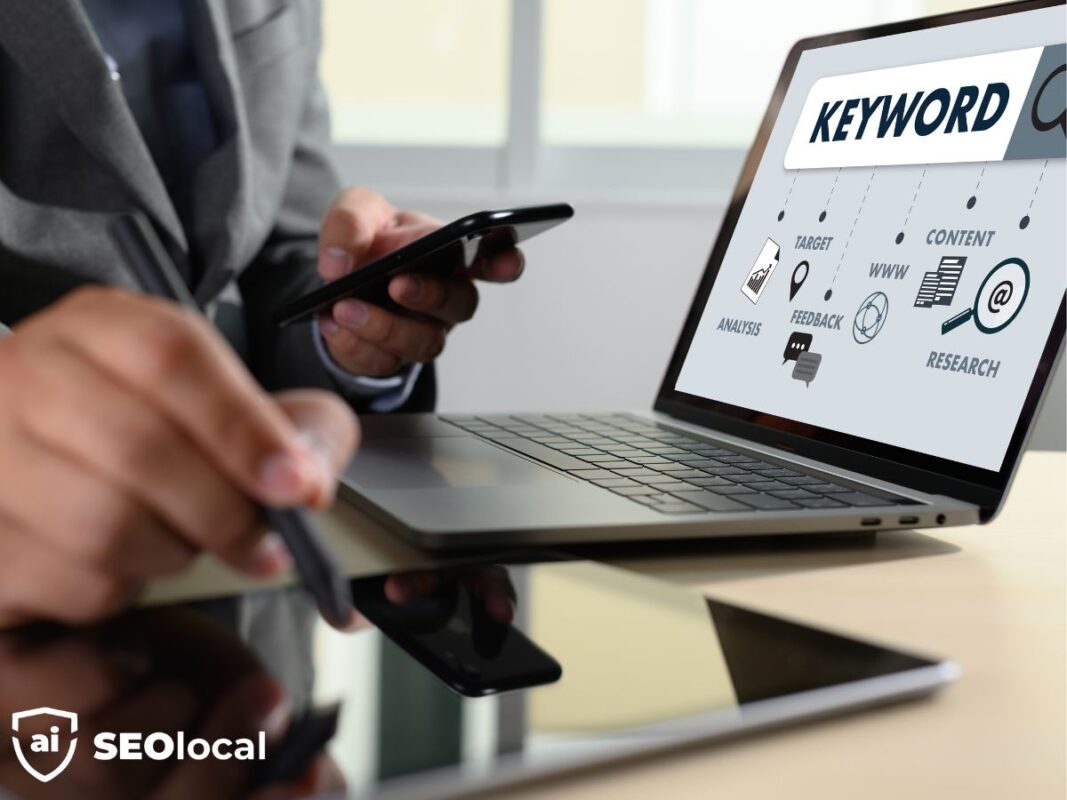
- Direct consultation: Message us at +1 786-840-9644 for immediate tips.
- No geographic limits: We serve businesses nationwide, with tailored plans for your industry.
| Feature | Benefit |
|---|---|
| WhiteSpark Surveys | Data-driven fixes based on competitor gaps |
| FTC-Compliant Reviews | Ethical reputation management without penalties |
| 24/7 Support | Real-time updates and crisis response |
Follow our step-by-step guide to dominate local searches. From citations to content clusters, we cover every ranking factor. Let’s grow your business—one search at a time.
Conclusion
Mastering these seven strategies elevates your visibility in search results. Combining Google Business Profile optimization with content clusters creates a powerful synergy. Avoid focusing solely on citations—balance is key.
Behavioral signals like dwell time and click-through rates will grow in importance. Stay ahead by tracking performance in Google Search Console and rank trackers.
Implement these tactics systematically to boost rankings. Consistent effort drives long-term success for businesses targeting nearby customers.
FAQ
Why is Google Business Profile important for my business?
A well-optimized Google Business Profile boosts visibility in search results, especially for nearby customers. It helps your listing appear in Google Maps and local packs, driving more traffic.
How do reviews impact my local rankings?
Positive reviews build trust and improve rankings. Search engines consider review quantity, quality, and recency when determining your business’s authority.
What are the best directories for local citations?
Focus on high-authority directories like Yelp, Bing Places, and industry-specific platforms. Accurate citations improve consistency and rankings.
How can I improve my website for local search?
Optimize service pages with location-based keywords, ensure NAP (Name, Address, Phone) consistency, and create content that answers local queries.
What types of backlinks help local SEO?
Links from local news sites, chambers of commerce, and industry blogs strengthen relevance. Prioritize quality over quantity.
How do user signals like clicks-to-call affect rankings?
Search engines track actions like calls or directions. More engagement signals higher relevance, improving your position in results.
Should I create location-specific pages?
Yes. Dedicated pages for each service area help target local searches. Include testimonials, maps, and unique content for better rankings.



